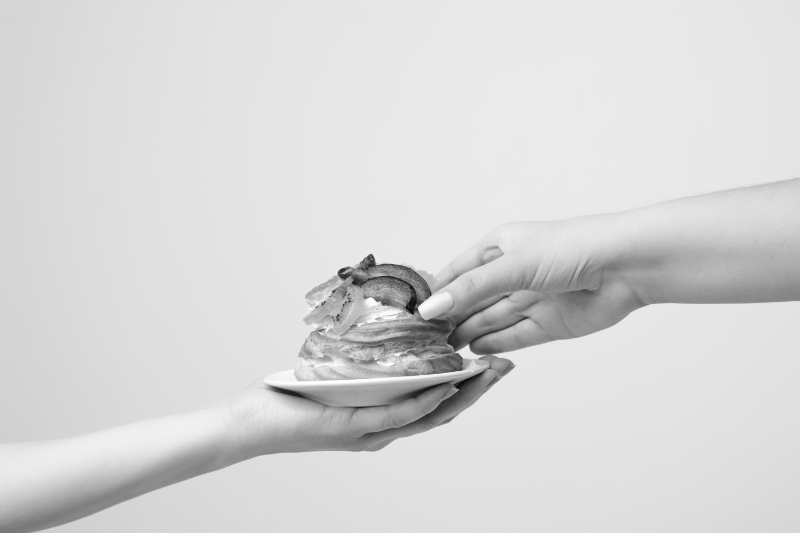Your fingernails might seem small and unimportant, but try living without them for a day! They act like little shields, protecting the soft skin at your fingertips whenever you grab something or push open a door. If you notice your nails start looking dull or fracturing easier than before, it’s usually no coincidence — it’s the body’s subtle way of waving a caution flag about nutrient levels getting low.
If noticing those issues, you should take that red flag seriously. Take it as a cue to reevaluate your diet and ensure you get all the nutrients your body needs. You may also want to talk to your healthcare provider about supplements that could help address deficiencies.
This article aims to illuminate the connection between nails and nutrition. You’ll learn how to spot the signs of nutrient deficiencies so you can take proactive steps to address them. By the end, you’ll know how to identify those signs and take action to help your nails become stronger and healthier.
Nail health and its importance
Elegant hands deserve an empowered defense, so it makes sense why nature outfitted humans with nails. Each protects the sensitive flesh below as people go through day-to-day motions without a second thought. Whether opening a package or stirring a pot, nails shield fingertips from harm’s way without people having to consider it.
But beyond practical shielding, beautiful nails can improve your presentation immensely. When nails appear lackluster or uneven in hue, something below the surface may warrant attention. Unhealthy nails (e.g., brittle, discolored) often indicate underlying issues such as:
- Repeatedly wetting and drying the nails
- Excessive use of nail polish remover
- Nutritional deficiencies include iron deficiency and hypothyroidism, a condition in which the thyroid gland does not produce enough of the thyroid hormones that the body requires for normal functioning.
Understanding the connection between nutrition and nail health
The nutrients you consume are key to keeping your nails strong and healthy. Deficiencies in certain vitamins and minerals can disrupt nail cell formation and collagen synthesis, leading to brittle, peeling, or discolored nails. For instance, these nutrients are crucial for healthy nail matrix cells that produce keratin, the key protein in nails.
Read more: Mindful Nutrition: Science-Based Techniques for a Healthy Diet
Brittle nails can be painful and make everyday tasks like opening packages or typing difficult. Splitting nails that are prone to breaking and discoloration can be aesthetically unpleasant.
If you have soft or weak nails, that’s commonly due to over-exposing them to moisture or chemicals or not getting enough of certain nutrients like B vitamins, calcium, iron, or essential fatty acids. Vertical nail ridges are usually nothing to worry about, but those horizontal ridges, called Beau’s lines, can indicate kidney disease or other conditions.
You should also pay attention to changes in the appearance of nails — the color, texture, and even the shape. These can be early warning signs for all sorts of health issues, from anemia and thyroid problems to lung conditions.
Signs of nutritional deficiencies
The condition of your nails can provide insights into various health issues within the body. Some notable nail conditions and their potential underlying causes include:
Koilonychia (reverse curvature of the nails)
- More common in fingernails than toenails
- Can be caused by iron deficiency anemia, malnutrition, thyroid disorders, and certain types of cancer
- Often seen in young children but tends to improve as they get older
- May indicate psoriasis if accompanied by thickening of the skin under the nail
Clubbing (increased curvature of the nail plate)
- Can be classified as idiopathic, hereditary, or acquired
- Linked to conditions like congenital heart diseases, lung cancer, cystic fibrosis, inflammatory bowel disease, and HIV/AIDS in children
- Also associated with a condition called hypertrophic osteoarthropathy
Preventing deterioration through proper nutrition
Although nails may seem mundane, nail disorders account for approximately 10% of all dermatological conditions. Virtually any kind of nutritional deficiency, whether it’s proteins, sulfur, or minerals, affects the growth and appearance of your nails. Having reliable information on the role of these different nutrients is key to identifying the underlying causes of nail problems.
Anyone dealing with chronic or recurring nail issues should take a close look at their diet and overall nutrient intake. Making sure you’re getting enough of the right building blocks can go a long way in keeping those nails healthy and strong. And if supplements seem warranted, that could be worth exploring as well, in consultation with your healthcare provider, of course.
Nail health is closely tied to overall nutritional status, so addressing any dietary deficiencies is an important first step. Here are some practical strategies that can help support optimal nail health:
Balanced diet for nail health
A balanced, nutrient-rich diet is essential for maintaining strong, healthy nails. Here are some practical strategies that support optimal nail health:
- Prioritize protein intake. Nails are primarily made of keratin. Good sources include lean meats, poultry, fish, eggs, beans, and nuts.
- Include biotin-rich foods. Biotin is essential for nail strength and growth, so consume biotin-rich foods like chicken liver, pork liver, egg yolks, salmon, pork chops, edamame, sunflower seeds, button mushrooms, sweet potatoes, almonds, and broccoli.
- Ensure sufficient iron consumption. Iron deficiency can lead to brittle and spoon-shaped nails. Sources include beef, lamb, pork, chicken, organ meats, beans, lentils, nuts, seeds, leafy greens, and fortified cereals.
- Consume omega-3 fatty acids. Include omega-3 fatty acids from sources like salmon, walnuts, and flaxseeds to help maintain nail moisture and prevent dryness and brittleness.
- Boost vitamin A, C, and D intake. Boost intake of vitamins A, C, and D, which support collagen production for strong nails. Best sources include mangoes, sweet potatoes, carrots, citrus fruits, bell peppers, strawberries, broccoli, fatty fish, and dairy products.
- Incorporate zinc-rich foods, such as whole grains, red meat, nuts, and dairy products. Zinc plays a role in nail health. However, speak with a healthcare provider before considering supplements.
- Stay hydrated. Drink at least 64 ounces (8 cups) of water daily. Dehydration can cause nails to become dry and brittle.
- Limit certain foods. Limit sugary, salty, and caffeinated foods as they may have a negative impact on nail quality. Opt for whole grains, unsalted nuts, and decaffeinated beverages instead.
Recognizing and addressing deficiencies
Nutrient deficiencies can manifest physically and mentally/emotionally. It’s important to pay attention to persistent symptoms and not dismiss them. If signs like brittle nails, hair loss, mouth ulcers, or mood changes persist for 2-3 months or are accompanied by fatigue, it’s a good idea to discuss getting a basic blood test with your doctor.
Often, temporary deficiencies can be corrected through dietary changes — making sure to get enough of the key hair, skin, and nails vitamins and minerals through the foods you eat. But as you noted, long-standing or multiple micronutrient deficiencies may require medical guidance and supplements to properly address.
Supplements for nail health
The best hair, skin, and nail vitamins can provide a great, balanced source of the key vitamins and minerals needed for overall nail health. These types of multi-nutrient supplements can be really helpful for addressing minor deficiencies that might be contributing to problems like brittle nails or hair loss.
If there are more serious, diagnosed deficiencies, it’s important to work closely with a healthcare provider. They may need to prescribe individual supplements under their supervision until the issue can be fully resolved through dietary changes alone. It’s crucial to get professional guidance to make sure the right nutrients are being targeted, and the dosages are appropriate for your unique needs.
In conclusion
Your nails may subtly relay valuable messages from deep within. Their thriving relies upon sufficient vitamins, minerals, and protein. Therefore, fragile texture or uneven hues warranting notice could imply your intake lacks certain needs. In such scenarios, tweaks prove wise to restore balance, such as incorporating varied whole foods concentrated in micronutrients.
Don’t hesitate to go see your doctor if you’re concerned about the impact of nutritional deficiencies on nail health. They can run some blood tests to get to the root of the issue. Catching and addressing any deficiencies early on can help prevent further health impacts down the line.
If you would like to see more resources on nail health, check out the Longevity Science Labs. The lab uses the research of the Institute for Life Management to produce courses, certifications, podcasts, videos, and other tools. Visit the Longevity Science Labs today.
Photo by master1305 on Freepik
Disclaimer: The information provided in this article is intended for general informational purposes only and should not be considered professional medical advice or a substitute for consultation with a qualified healthcare professional. The content of this article is not intended to diagnose, treat, cure, or prevent any disease or medical condition. Always seek the advice of your physician or another qualified healthcare provider with any questions you may have regarding a medical condition. Never disregard professional medical advice or delay seeking it because of something you have read in this article. The authors, publishers, and any associated parties do not endorse any specific treatments, procedures, products, or opinions mentioned in this article. Reliance on any information provided in this article is solely at your own risk. Furthermore, medical knowledge is constantly evolving, and the information presented in this article may not be up-to-date. It is advisable to verify the accuracy of any health-related information by consulting medical professionals. If you are facing a medical emergency, call your local emergency number immediately or seek medical attention from a qualified healthcare provider.


